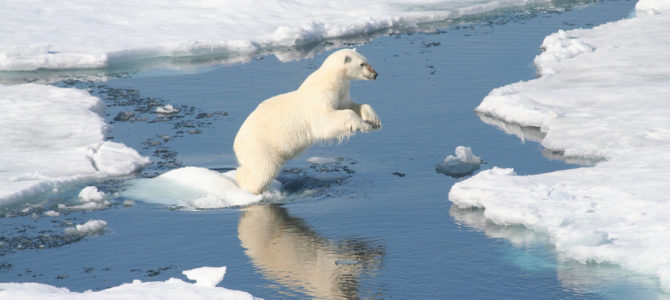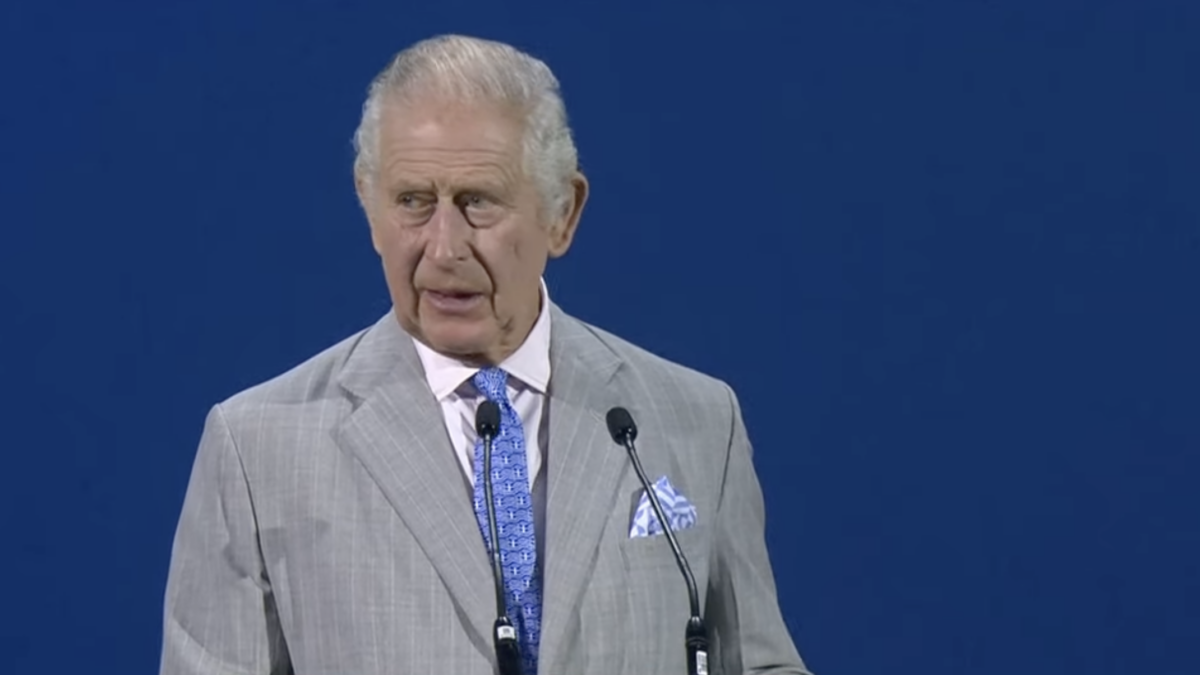
Can we just leave the polar bears out of this?
Polar bears have long been an unwitting poster child for climate change. There’s just something about a forlorn polar bear clinging to a melting iceberg that really tugs at the heartstrings—and the media knows it. For nearly two decades now, Time magazine in particular has relied on some variation of polar-bears-on-icebergs for its big climate change stories. (One cover from 2006 featured the iconic image with an alarmist headline: “Be Worried. Be Very Worried.”) That same year, Al Gore popularized the idea of drowning polar bears in his docudrama, “An Inconvenient Truth,” claiming that melting arctic ice would leave polar bears adrift at sea with nowhere to rest.
Last month brought the latest entry to the genre, with a twist. Photographers with a conservation group called Sea Legacy captured video footage of an emaciated polar bear wandering through an ice-barren landscape in the Canadian arctic, desperately searching for food. The video, set to mournful violin music, went viral after photographer Paul Nicklen posted it on Instagram. Nicklen subsequently gave multiple interviews to major outlets like the New York Times and National Geographic with quotes like, “When scientists say bears are going extinct, I want people to realize what it looks like.”
Nicklen’s hyperbole notwithstanding, the footage is sad—that bear really is starving to death. But the video and the emotional reaction to it online speaks volumes about the intellectual dishonesty of global warming alarmists. There’s no way to know why this particular animal is dying. There was no postmortem done on the bear and there is of course nothing scientific about the emotionally-charged video.
Several wildlife biologists have criticized Sea Legacy for linking this one bear with climate change, noting that polar bears starve to death every year for reasons that have nothing to do with climate change. Moreover, the video was shot in August, a period of seasonal famine for polar bears, which build up reserves of fat in the spring and summer.
Relax, Polar Bears Are Doing Just Fine
The really maddening part of the starving bear video is the assumption, common to all purveyors of anthropogenic global warming, that if we don’t do something right now then the ice caps will melt and all the bears will die. Nicklen states this plainly in his Instagram post, saying that the only way to save polar bears is to “reduce our carbon footprint, eat the right food, stop cutting down our forests” and so on.
But polar bears are not going extinct. On the contrary, they seem to be doing fine, despite a long-term trend of declining arctic ice. While scientists don’t know exactly how many polar bears there are (they’re hard to count, as you can imagine) the global population is estimated to be around 30,000 and stable. But without hard data there’s there’s no real way to measure accurately an increase or decrease in the world’s polar bear population.
Given this, one would think scientists would be wary of making sweeping predictions about the effect of climate change on polar bear populations. But no. In 2007, U.S. Geological Survey biologists predicted that two-thirds of the world’s polar bears would die off and that 10 out of 19 subpopulations of polar bears would be completely wiped out because of dwindling arctic sea ice, which their models said would happen by the year 2050.
The problem was, arctic sea ice soon dropped to those projected 2050 levels and more or less remained there ever since. And guess what? There hasn’t been a corresponding massive die-off in polar bears. By some estimates, there are more polar bears alive today than there were 40 years ago.
Climate Change Is Fraught With Bad Predictions
By now, any curious and conscientious person has no doubt observed this pattern in the climate change debate. Scientists and experts make sweeping predictions based on complex climate models that turn out, years later, to be completely wrong. But then they shrug it off and carry on as before, and the media more or less gives them a pass.
One fine example of this appeared this week in The Guardian under the headline, “On its 100th birthday in 1959, Edward Teller warned the oil industry about global warming.” The gist of it is that Teller, a nuclear weapons physicist who worked on the Manhattan Project and was known as the “father of the hydrogen bomb,” warned the oil industry in the late 1950s that burning fossil fuels would increase carbon dioxide in the atmosphere and cause global warming. In 1959, at a symposium in New York to mark the centennial of the oil industry, Teller told the audience:
It has been calculated that a temperature rise corresponding to a 10 per cent increase in carbon dioxide will be sufficient to melt the icecap and submerge New York. All the coastal cities would be covered, and since a considerable percentage of the human race lives in coastal regions, I think that this chemical contamination is more serious than most people tend to believe.
Later, he went on to explain that carbon dioxide had risen in the atmosphere by 2 percent “over normal,” and that if this continued:
By 1970, it will be perhaps 4 per cent, by 1980, 8 per cent, by 1990, 16 per cent, if we keep on with our exponential rise in the use of purely conventional fuels. By that time, there will be a serious additional impediment for the radiation leaving the earth. Our planet will get a little warmer. It is hard to say whether it will be 2 degrees Fahrenheit or only one or 5.
Of course, these predictions were completely wrong. Global temperatures in 1990 were not 2 or 5 or 20 degrees higher than they were in 1959. According to NASA, global surface temperature increased by less than half a percent during that timeframe. As a result, the icecaps haven’t melted and the oceans are not inundating our coastal cities.
That’s not to say that global warming isn’t happening or that it might not eventually cause huge problems, like massive polar bear die-offs. But if the argument for climate change and its sweeping policy agenda is that it’s all based on science, then its proponents need to focus on the science part and hold off for now on dire predictions of catastrophe and dying bear videos.









